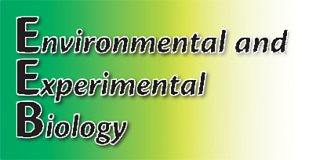
On-line: ISSN 2255–9582

| Faculty of Biology, University of Latvia | ||||||

|
Hard copy: ISSN 1691–8088
On-line: ISSN 2255–9582 Env Exp Biol (2012) 10: 1–7
|
|||||

|
About the Journal | Retractions | Open Access | Author Guidlines | Current Issue | Archive |
|
Environmental and Experimental Biology |
Env Exp Biol (2012) 10: 1–7 |
The aim of the study was to survey fungal endophytes inhabiting healthy leaves and stems of evergreen rhododendrons and during in vitro tissue culture for their propagation. Fungi were identified using morphological traits. The main taxa observed in rhododendron leaves in vivo were Phomopsis, Phoma, Alternaria spp., Colletotrichum, Cladosporium, Seimatosporium, Diplodina, Coleophoma, Cryptocline, Truncatella and Guignardia spp. Contamination in tissue culture were caused by Penicillium, Cladosporium, and Cephalosporium spp. The study supported the view that endophytes can infect medium of in vitro cultivated rhododendrons. Fungal diversity increased after acclimatization of rhododendron plantlets ex vitro. The presence of microorganisms in rhododendron cultivated in vitro depended both on age of tissue and host genotype.